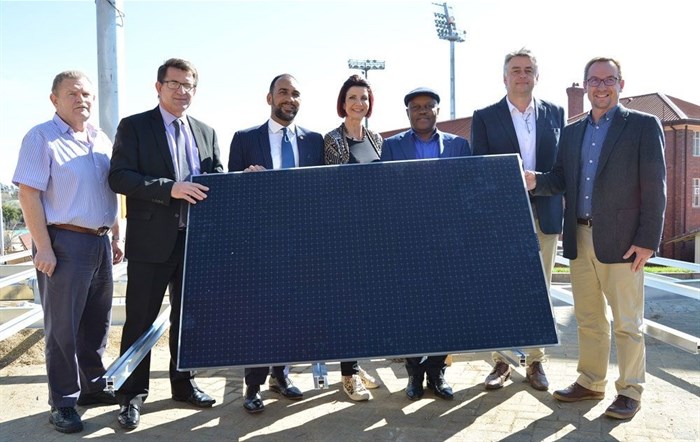In 2013, Central University of Technology, Free State (CUT) embarked on its first project to harness the power of the sun. The project called, the Solar-Flower was the university's first endeavour into the solar field.

L to R: Prof. Herman Vermaak, dean of the Faculty of Engineering and Information Technology; Prof. Henk de Jager, vice-chancellor and principal of CUT; Dr Gary Paul, deputy vice-Chancellor: Resources and Operations; Prof. Hesta Friedrich-Nel, assistant dean of Teaching and Learning in the Faculty of Health and Environmental Sciences; Prof. Alfred Ngowi, deputy vice-chancellor: Research, Innovation and Engagement; Martin Walzer, project manager: technical at Karah Assets and Cobus Vermeulen, managing director at Karah Assets.
The Solar-Flower was designed and developed by a CUT engineering team, while the steel construction of the device was done in the mechanical workshop at the university’s Bloemfontein campus. The solar station allowed students to charge their devices on campus and are still placed in strategic positions around both campuses.
“It is important that as technology educators we remain at the forefront of technology, particularly in the field of renewable energy,” said Professor Herman Vermaak, dean of the Faculty of Engineering and Information Technology about the project. “This project is a perfect example of doing just that. Besides providing a practical solution to a growing problem on campus, it also gives us an opportunity to introduce all students and staff members to the use of sustainable energy.”
The next step for the team was to experiment with solar panels when used as the electricity source for a building.
In 2014, the then newly erected engineering building was the first construction on campus to have solar panels placed on the roof and over time, the third and second floor of the building was taken of the power grid. The project continued.
This year, CUT has decided to upscale the project with the installation of a Solar Plant that will produce 153,59kWp through ground-mounted 8m high panels secured on masts. The power generated will be fed into the local grid of the University, and this process will be closely monitored. The monitoring will also extend to temperature and irradiation for the purpose of training staff and students involved in the project.
The project forms part of a cost-saving measure by the university as the energy bill of the institution is high, and by generating our own electricity we are also looking to reduce our footprint.



















